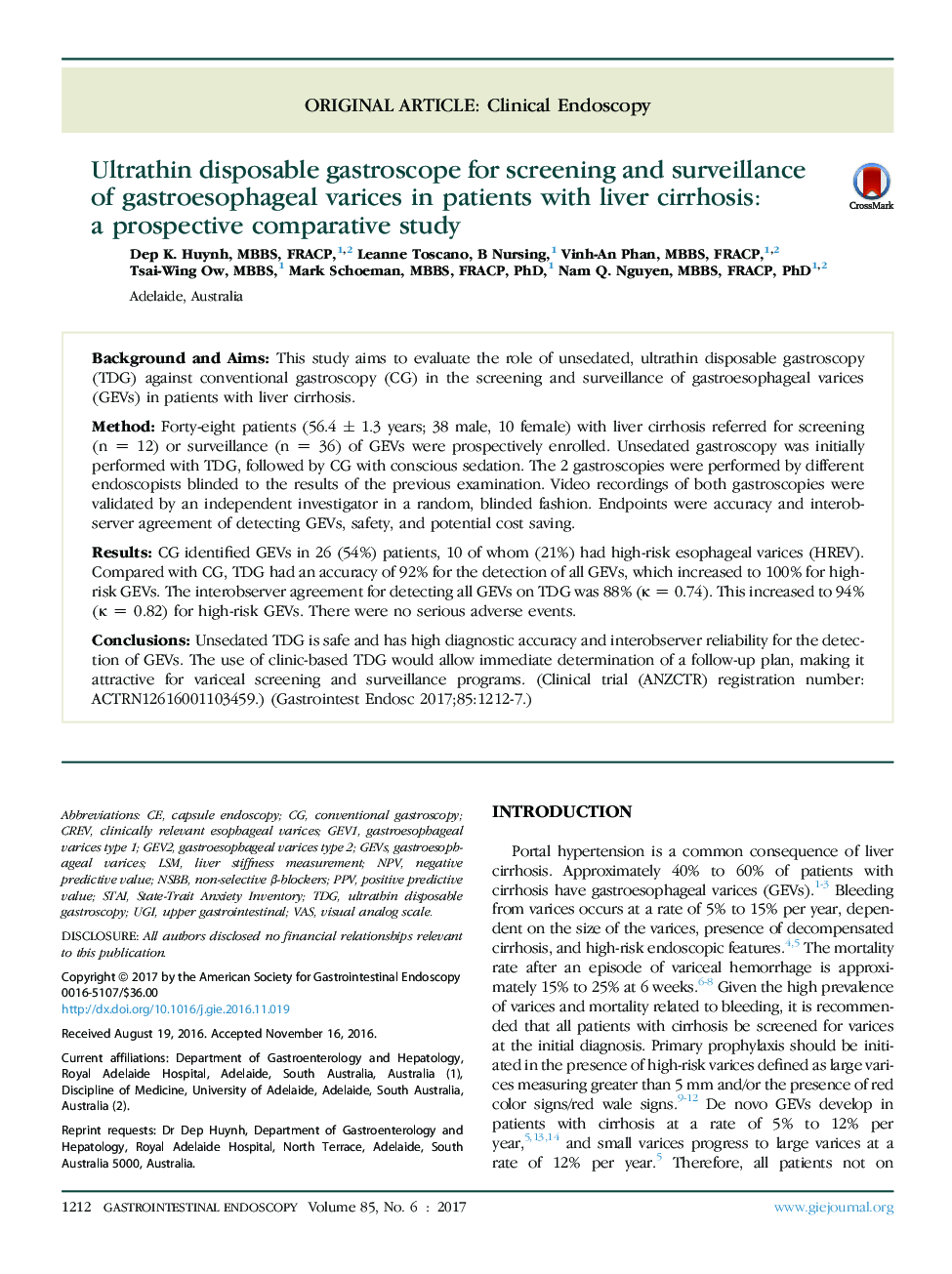| Article ID | Journal | Published Year | Pages | File Type |
|---|---|---|---|---|
| 5659377 | Gastrointestinal Endoscopy | 2017 | 6 Pages |
Background and AimsThis study aims to evaluate the role of unsedated, ultrathin disposable gastroscopy (TDG) against conventional gastroscopy (CG) in the screening and surveillance of gastroesophageal varices (GEVs) in patients with liver cirrhosis.MethodForty-eight patients (56.4 ± 1.3 years; 38 male, 10 female) with liver cirrhosis referred for screening (n = 12) or surveillance (n = 36) of GEVs were prospectively enrolled. Unsedated gastroscopy was initially performed with TDG, followed by CG with conscious sedation. The 2 gastroscopies were performed by different endoscopists blinded to the results of the previous examination. Video recordings of both gastroscopies were validated by an independent investigator in a random, blinded fashion. Endpoints were accuracy and interobserver agreement of detecting GEVs, safety, and potential cost saving.ResultsCG identified GEVs in 26 (54%) patients, 10 of whom (21%) had high-risk esophageal varices (HREV). Compared with CG, TDG had an accuracy of 92% for the detection of all GEVs, which increased to 100% for high-risk GEVs. The interobserver agreement for detecting all GEVs on TDG was 88% (κ = 0.74). This increased to 94% (κ = 0.82) for high-risk GEVs. There were no serious adverse events.ConclusionsUnsedated TDG is safe and has high diagnostic accuracy and interobserver reliability for the detection of GEVs. The use of clinic-based TDG would allow immediate determination of a follow-up plan, making it attractive for variceal screening and surveillance programs. (Clinical trial (ANZCTR) registration number: ACTRN12616001103459.)
